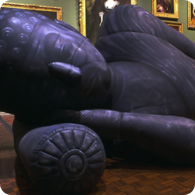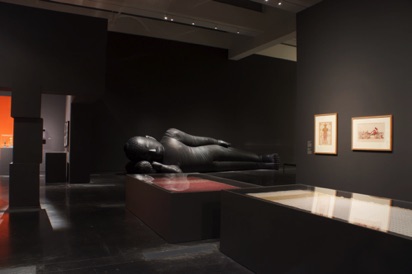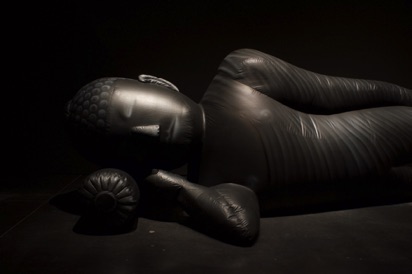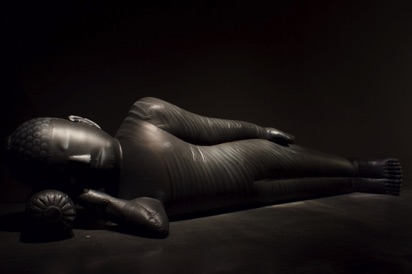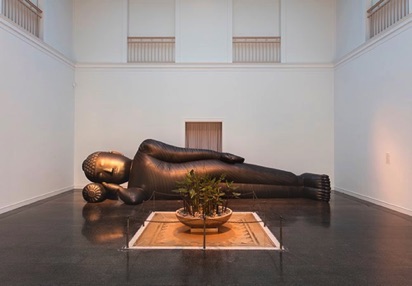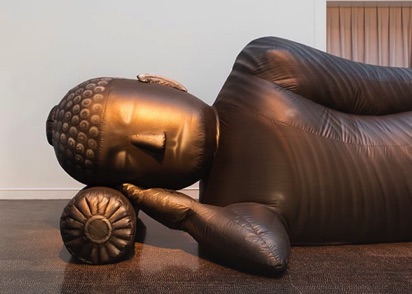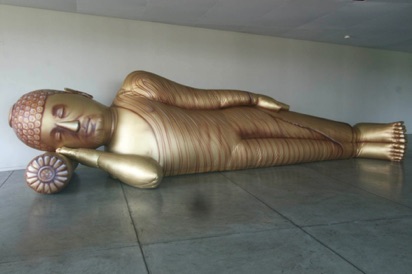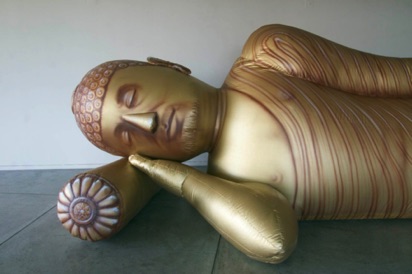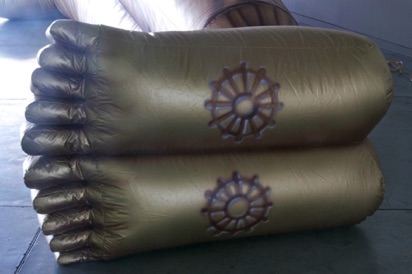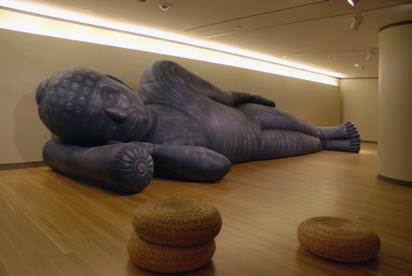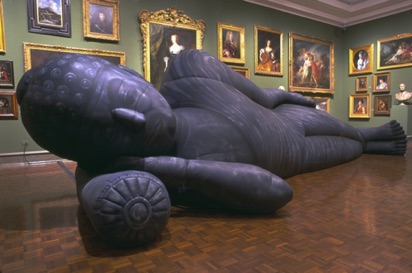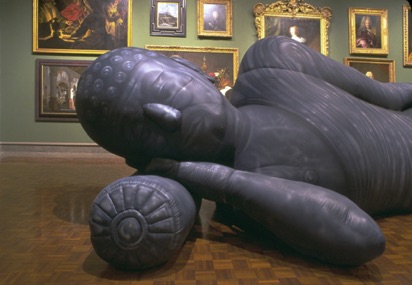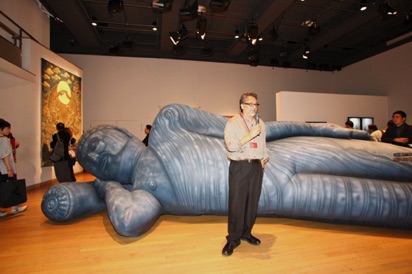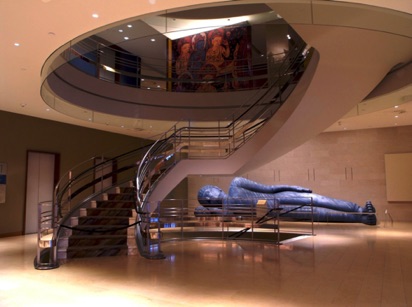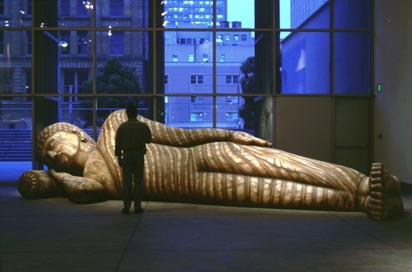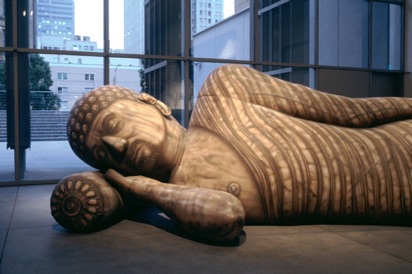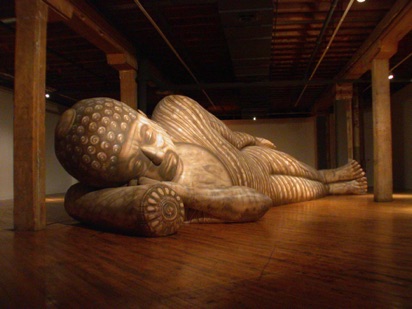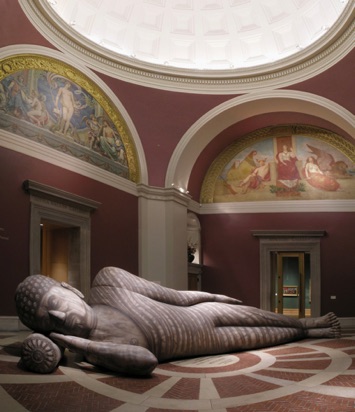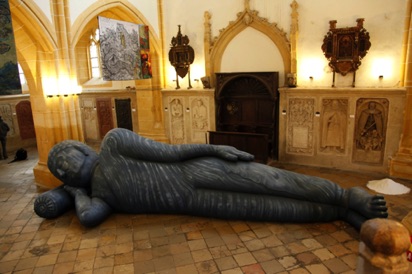25’x7’x6’, Painted cloth, electric air fan
Variable edition (in color)
PARANIRVANA (self-portrait) is a sculpture based on the figure of the Buddha at Gal Vihara in Sri Lanka. This particular genre of images tells the story of the Buddha at his death. It is told that the Buddha died of food poisoning. As he lay in pain, he gave further compassionate lessons on the nature of consciousness and the structure of samsara (the wheel of life, death, suffering and rebirth). It was his hope that all beings would be able to enter a consciousness where the continuance of suffering, as a direct result of karma (actions) would be extinguished and the cycle of continual rebirth into the world of
samsara would end. It is thus that the Buddha died with a sense of consciousness held high in the history of religious traditions and thought. It is interesting to contrast this with the image of Christ, who hung suffering, died, but resurrected later, thus skirting death and finality.
The artist has pictured his face on the inflatable image of this figure to ask a question about his own demise and how he might meet it. The scale of the work proposes that the issue of death in itself is large and overpowering. The materiality of the work denies this; as something to be experienced in the future and something given to vaguely mysterious speculation (in this society), the work remains empty, only held up by the pressure of an air fan.
Currently, four versions of this sculpture exist. The tan colored version is in the collection of the Museum of Contemporary Art in San Diego. The blue version is in the collection of the Columbus Museum of Art. There is a gold version currently touring United States museums. There is also a black version commissioned by the Santa Barbara Museum of Art.
